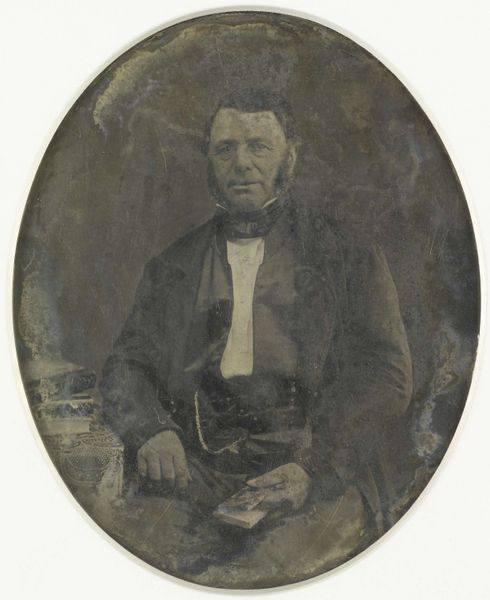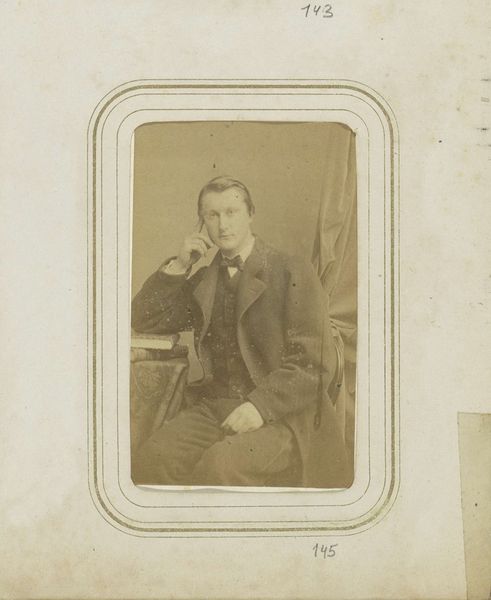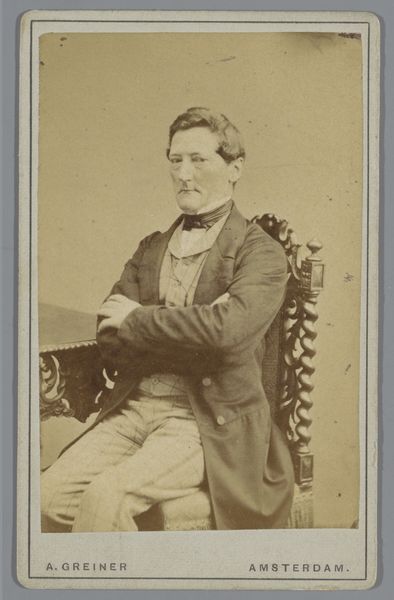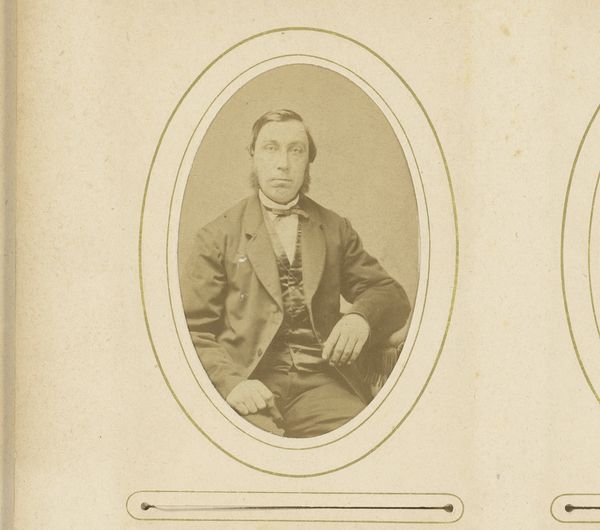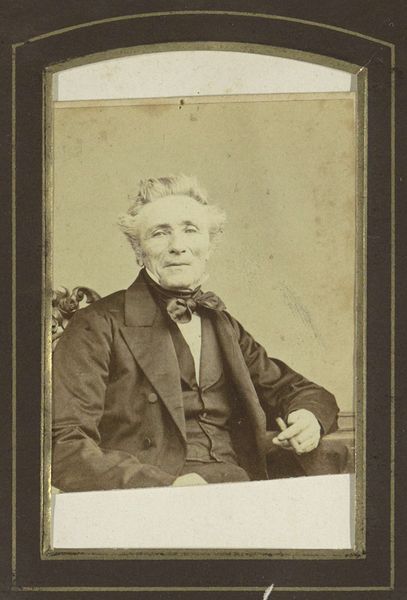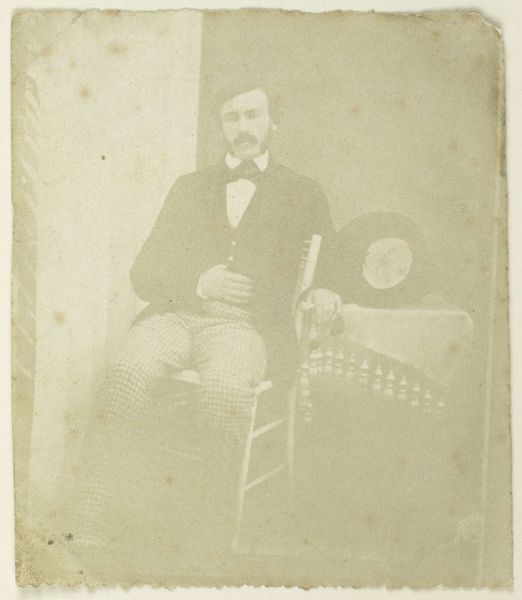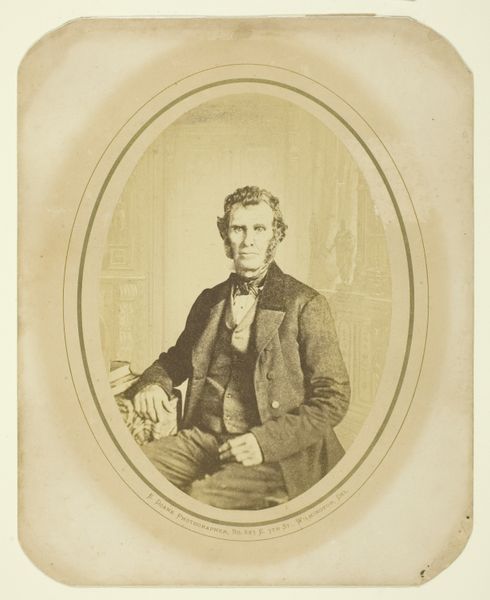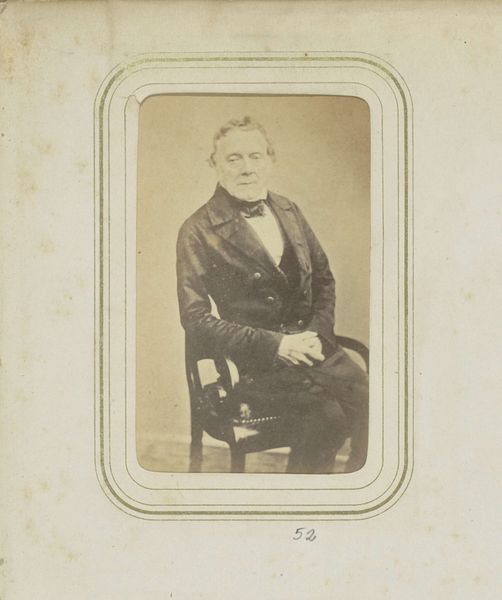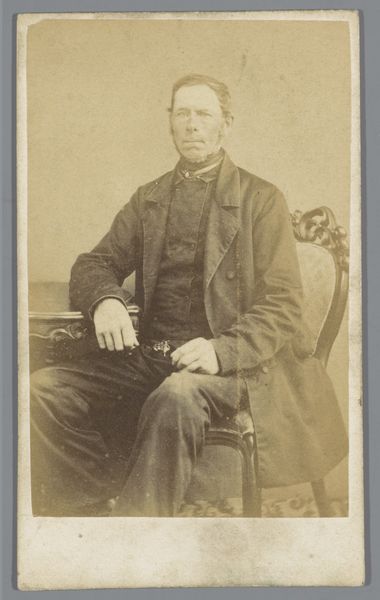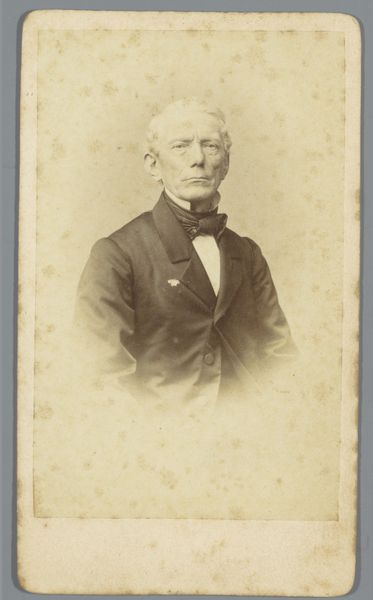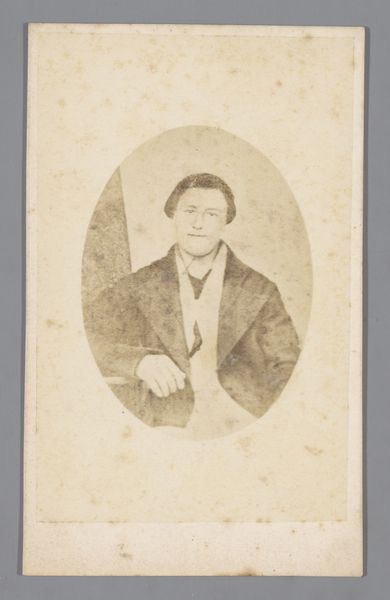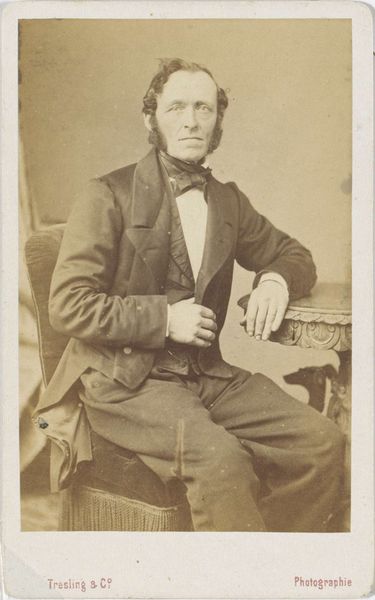
Fotoreproductie van een daguerreotypie-portret van Lodewijk Asser c. 1890 - 1894
0:00
0:00
daguerreotype, photography
#
portrait
#
daguerreotype
#
photography
#
portrait reference
#
realism
Dimensions: height 143 mm, width 106 mm
Copyright: Rijks Museum: Open Domain
Curator: This is a photographic reproduction, made circa 1890-1894, of an earlier daguerreotype portrait of Lodewijk Asser. It is currently held here at the Rijksmuseum. Editor: There's something almost melancholy about it, wouldn't you agree? A wistful sort of gaze, framed by that oval vignette, as if time itself is receding. Curator: The choice to reproduce the original daguerreotype tells us so much about the shifting value of the photographic object itself. From a unique image created through laborious chemical processes to a copy, almost mass-produced. Editor: Indeed, the persistence of certain sartorial signifiers—the patterned waistcoat, the elaborate cravat—speak volumes about bourgeois identity and self-presentation. Each detail seems freighted with symbolic weight. The little apparatus beside him, what does that signify? Curator: Probably a stereoscope, which suggests Asser's engagement with new technologies and also a certain social status, access to leisure. Also, consider how the act of reproducing an image alters its status. Editor: Precisely. We’re looking at not just an image of a man but a reproduction, layering representations upon representations, hinting perhaps at immortality or the desire to perpetuate his likeness for posterity. Curator: Which completely shifts the production process and questions the supposed ‘truth’ of photography that many at the time believed in. A mechanical copy removes some of the artistic labor associated with making. The subject is then copied over and over again. Editor: Does that devaluation change our perception? Knowing the original image underwent this material transformation? Perhaps even amplify the solemn effect we first noted. It makes me think about the way cultural memory persists, through imagery and continuous recoding, or copying of imagery from one technology to the other. Curator: It definitely challenges traditional notions of authorship and artistic originality, while drawing our attention to the social life of photographic materials. Thank you for that insightful symbolic reading of a piece with rich materiality to consider! Editor: And thank you for grounding this reading in that key shift in value; this helps one notice things one otherwise would have missed.
Comments
No comments
Be the first to comment and join the conversation on the ultimate creative platform.
